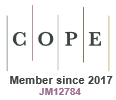Just Accepted
This article has been peer reviewed and accepted for publication. It is in production and has not been edited, so may differ from the final published form.
Effects of time away from pasture on milk production and dry matter intake in dairy cattle.
Abstract
CONTEXT: In pasture-based dairy systems, cows can spend long periods of time off pasture and form a consistent milking order. This research was conducted to isolate the effects of time away from pasture from other possible factors. AIM: In this research the effect of time away from pasture on the nutrient intake and subsequent milk production, per cow, was investigated. METHODS: Two experiments were conducted, Experiment 1 in late lactation and Experiment 2 in early lactation. Each experiment enrolled 40 Holstein-Friesian multiparous dairy cows. Each experiment included an adaptation period, a n-alkane dosing period, and a measurement period. During the measurement periods, individual dry matter intake (DMI), milk production, and feeding behaviours were measured, in addition to changes of pasture mass and nutritive characteristics. In each experiment, five time-interval treatments were investigated, one group returning to the paddock immediately following milking (T0:00; h:mm) and subsequent groups in 45-min increments thereafter (T0:45, T1:30, T2:15 or T3:00). All cows grazed perennial ryegrass pasture and were offered a wheat and barley grain mix, during milking. KEY RESULTS: Increased time away from pasture resulted in a linear decline of milk yield. In Experiment 1, this was coupled with a linear decline in individual cow pasture. Time away from pasture also influenced the feeding behaviours of the cows. A linear reduction in pasture mass between when the first and last cows entered the paddock was observed in both experiments. In Experiment 2, pasture nutrient concentrations changed over the 3h period, with a linear decrease in estimated ME, and concentrations of crude protein and crude fat, coupled with a linear increase in the NDF concentration of the pasture. This relationship was not seen in Experiment 1. CONCLUSIONS: This research demonstrates that increased time away from pasture decreased the milk yield of cows, possibly driven by lower pasture mass and nutritive composition of the remaining pasture for cows returning later to the paddock. IMPLICATIONS: This research highlights the challenges in pasture allocation and ration/supplementary formulation when cows consume grazed pastures and the requirement for future research to investigate methods to ensure even distribution of nutrients and feed across a herd.
AN25027 Accepted 17 June 2025
© CSIRO 2025



